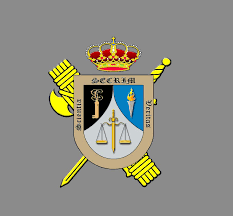

News
TWENTY ARCHAEOLOGISTS EXPLORE PREHISTORIC LEGACY

The Alicante Archaeology Museum (MARQ) is currently engaged in excavation work at the Laderas del Castill site in Callosa de Segura. This programme, which will continue until the end of the month, is hoped to reveal part of the ruins which are thought to be conserved beneath the residue that covers the pine-forested mountainside where the former village La Bastida de Totana was, the world capital of its time.
The campaign is part of a collaboration project between the Alicante Provincial Council and Callosa Town Hall that aims to increase knowledge of the ancient civilisations that populated the area. The work is also a continuation of preliminary explorations and studies carried out last year in this prehistoric part of the province.
But first the excavators must find their way through four thousand years of erosion that occupies the slope of the mountain
To achieve this more than 20 graduates and university students are voluntarily cooperating on this work, directed by the archaeologists Juan Antonio López and Francisco Javier Jover. Amongst the tasks being carried out, the team are opening a new area for excavation and working to clear rubble so as to uncover the walled structures or terraced houses that are thought to exist.
If La Bastida de Totana was the world capital 4,000 years ago, the town of Callosa de Segura was the Barcelona of the time. The Bronze Age left its mark on the town but you have to dig to find the last of what was then the largest city of Vega Baja.
The museum has put its focus on the site of Callosa, of which records show that it has not been excavated since 1925. At the time the landscape provided everything needed by Bronze man: underground water sources, arable land along the Segura and a rock formation that represented a natural defensive fortification to overlook all outposts approaching from the coast.
The dimensions and importance of this settlement must have made it one of the most significant centres of population in the Segura River Basin at the time.
The archaeology museums of Alicante and Cataluña currently keep numerous bronze items, ceramic containers, bone utensils and adornments, ivory and mother of pearl, as well as different mills, hammers and other stone tools from the excavations carried out in the area at the beginning of the 20th century. To them will be added the collection kept at the Callosa Municipal Archaeology museum, which recently moved to new premises.
A spokesman for the Department of Culture said that it is expected that this excavation will offer a major boost by the provision of more elements to the Municipal Archaeological Museum as well as heritage value which will promote tourism. The area councilor, Almudena Guilló, noted that “We intend to continue with these excavations for the next few years because this is the site is one of the most important Bronze Age locations found across the Vega Baja.
Filed under: http://www.theleader.info/article/39838/
Home Insurance | Spanish Home Insurance | Home Insurance in Spain | Spanish Property | Costa Blanca Spanish Property | Spain Property | Spanish Real Estate | Spain Real Estate

The Alicante Archaeology Museum (MARQ) is currently engaged in excavation work at the Laderas del Castill site in Callosa de Segura. This programme, which will continue until the end of the month, is hoped to reveal part of the ruins which are thought to be conserved beneath the residue that covers the pine-forested mountainside where the former village La Bastida de Totana was, the world capital of its time.
The campaign is part of a collaboration project between the Alicante Provincial Council and Callosa Town Hall that aims to increase knowledge of the ancient civilisations that populated the area. The work is also a continuation of preliminary explorations and studies carried out last year in this prehistoric part of the province.
But first the excavators must find their way through four thousand years of erosion that occupies the slope of the mountain
To achieve this more than 20 graduates and university students are voluntarily cooperating on this work, directed by the archaeologists Juan Antonio López and Francisco Javier Jover. Amongst the tasks being carried out, the team are opening a new area for excavation and working to clear rubble so as to uncover the walled structures or terraced houses that are thought to exist.
If La Bastida de Totana was the world capital 4,000 years ago, the town of Callosa de Segura was the Barcelona of the time. The Bronze Age left its mark on the town but you have to dig to find the last of what was then the largest city of Vega Baja.
The museum has put its focus on the site of Callosa, of which records show that it has not been excavated since 1925. At the time the landscape provided everything needed by Bronze man: underground water sources, arable land along the Segura and a rock formation that represented a natural defensive fortification to overlook all outposts approaching from the coast.
The dimensions and importance of this settlement must have made it one of the most significant centres of population in the Segura River Basin at the time.
The archaeology museums of Alicante and Cataluña currently keep numerous bronze items, ceramic containers, bone utensils and adornments, ivory and mother of pearl, as well as different mills, hammers and other stone tools from the excavations carried out in the area at the beginning of the 20th century. To them will be added the collection kept at the Callosa Municipal Archaeology museum, which recently moved to new premises.
A spokesman for the Department of Culture said that it is expected that this excavation will offer a major boost by the provision of more elements to the Municipal Archaeological Museum as well as heritage value which will promote tourism. The area councilor, Almudena Guilló, noted that "We intend to continue with these excavations for the next few years because this is the site is one of the most important Bronze Age locations found across the Vega Baja.
Filed under: http://www.theleader.info/article/39838/
Home Insurance | Spanish Home Insurance | Home Insurance in Spain | Spanish Property | Costa Blanca Spanish Property | Spain Property | Spanish Real Estate | Spain Real Estate






























